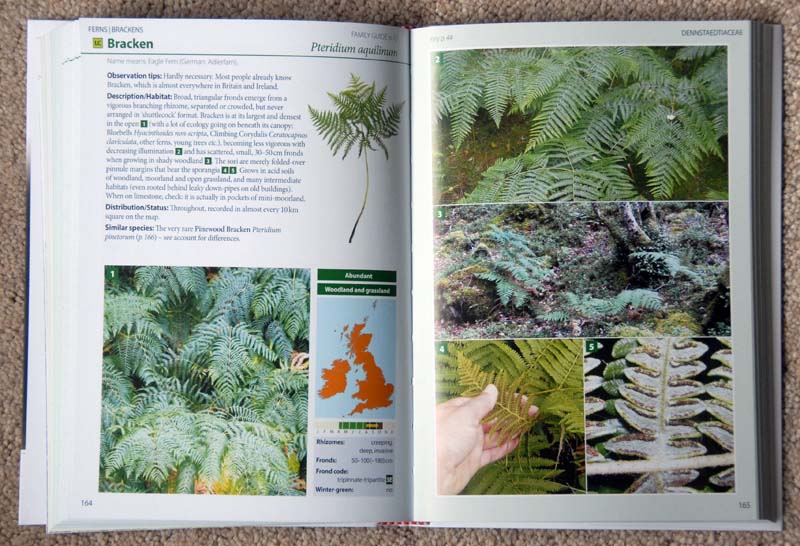Britain’s Ferns – A Review.
It works!
Britain’s Ferns is intended to provide a practical and functional approach to the identification of ferns, and it works!

I put it to the test with a number of local ferns and one horsetail and the identification keys, which are at the heart of the book, guided me through the process in simple and clear steps without the need for specialised knowledge, obscure botanical terminology or any previous experience. (I must confess to one initial blunder on my part but, after that, all went perfectly smoothly). The keys are excellent and there is much more to recommend the book also.
-
Blechnum spicant Hard Fern -
Asplenium ceterach Rusty Back Fern -
Phyllitis scolopendrium Hart’s Tongue Fern
The title may be a little misleading as the book covers four groups of plant for “because of historic botanical mis-sorting the Pteridophyta family consists of ferns plus a veritable rag-bag of barely related botanical odds and ends.” There are, in fact, four groups covered in the book: ferns, clubmosses, horsetails and quillworts which demanded an initial sorting key before one zones in on identification through the specific keys. In the keys, technical terms are kept to a minimum; differentiating features are clear and simple and it is obvious that every effort was made to eliminate vague descriptive terms – all is kept simple and clear-cut.



Identification leads to a double page entry for each species and, though I come to it a little later, it was the layout and appearance of these pages which struck me forcefully as soon as I opened the book. The photography is excellent and lavish with, generally, five photographs used to illustrate each species and its features very clearly while the text is clear and informative.
The entry for each species gives an overview and description, linked to the outstanding photographs, with attention drawn characteristic features – these illustrated with close-up photography. There are distribution maps, notes of conservation status and reference to similar species for comparison. These entries are truly excellent and lift the book well beyond its central function of mere identification to one providing interesting, informative and enjoyable reading also.

In the introduction, the author emphasises, that to use the book successfully, one simply must follow through the keys – “sidestepping the keys in favour of picture-matching can be hazardous…just idly scanning the pictures will often obtain the wrong answer.” I took his advice and, having tested his keys, can say, without hesitation, that it works! An excellent book!
[Britain’s Ferns: A field guide to the clubmosses, quillworts, horsetails and ferns of Great Britain and Ireland, James Merryweather, 2020, Princeton University Press, Oxfordshire, Softback, 280 pages, £20, ISBN: 978-0-691-18039-7]




